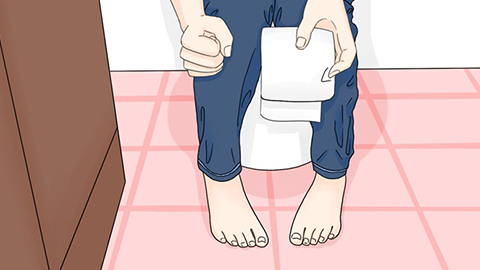What is the difference between rectal prolapse and hemorrhoids?
Generally speaking, rectal prolapse and hemorrhoids are two distinct anorectal diseases, differing mainly in lesion location, appearance of the prolapsed tissue, symptom presentation, affected populations, and treatment approaches. The specific differences are as follows:

1. Different lesion locations: Rectal prolapse, also known as procidentia, refers to the downward displacement of part or the entire rectal wall; the prolapsed tissue consists of rectal mucosa or the full rectal layer and occurs deeper inside the rectum. Hemorrhoids are swollen, dilated veins in the lower rectum or anal canal caused by venous congestion and dilation. The prolapsed tissue consists of varicose venous masses, located more superficially, confined to the anal canal or distal rectum.
2. Different appearances of the prolapsed tissue: In rectal prolapse, the prolapsed tissue appears annular or conical, smooth, pale red, with visible circular folds, soft in texture, and often longer than 3 cm in length; in severe cases, it can reach more than 10 cm. There is no obvious gap between the prolapsed tissue and the anus. In hemorrhoids, the prolapsed tissue consists of single or multiple soft purplish-red masses, irregular in shape, with mucosal or skin surfaces, and shorter in length, generally not exceeding 3 cm. There are noticeable gaps between multiple prolapsed masses.
3. Different symptom presentations: The main symptom of rectal prolapse is rectal protrusion. Initially, the tissue prolapses during defecation and spontaneously retracts afterward; in later stages, manual reduction is required, and the tissue may even prolapse during walking or coughing. Patients often experience a feeling of incomplete evacuation and rectal heaviness, while rectal bleeding is uncommon. The main symptoms of hemorrhoids include rectal bleeding, prolapse, pain, and itching. Bleeding is typically bright red and not mixed with stool. Prolapsed hemorrhoids may spontaneously retract in early stages but require manual repositioning in later stages. If strangulated, severe pain may occur.
4. Different affected populations: Rectal prolapse commonly occurs in children, the elderly, and individuals with weak physical conditions. Children may develop it due to underdeveloped rectal mucosa, while elderly and weak individuals are more susceptible due to pelvic floor muscle relaxation and weakened supportive tissues around the rectum. Hemorrhoids commonly affect adults, especially those who sit or stand for long periods, suffer from constipation, are pregnant, or are obese—conditions closely related to impaired venous return.
5. Different treatment approaches: Mild rectal prolapse can be managed conservatively, such as improving nutrition and strengthening pelvic floor muscle exercises (e.g., anal contraction exercises). Severe cases require surgical treatment such as rectopexy to fix the rectum in its normal anatomical position. Mild hemorrhoids can be treated conservatively through dietary adjustments and topical medications, while severe cases may require surgical interventions such as hemorrhoidectomy to remove the varicose venous masses.
In daily life, it is important to cultivate good bowel habits, avoid prolonged sitting on the toilet, maintain regular and smooth bowel movements, and appropriately exercise the pelvic floor muscles to help reduce the occurrence of rectal prolapse and hemorrhoids, thus maintaining anorectal health.




